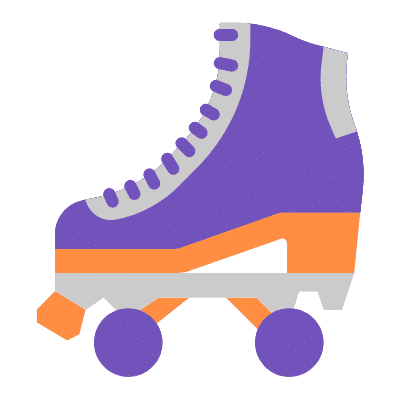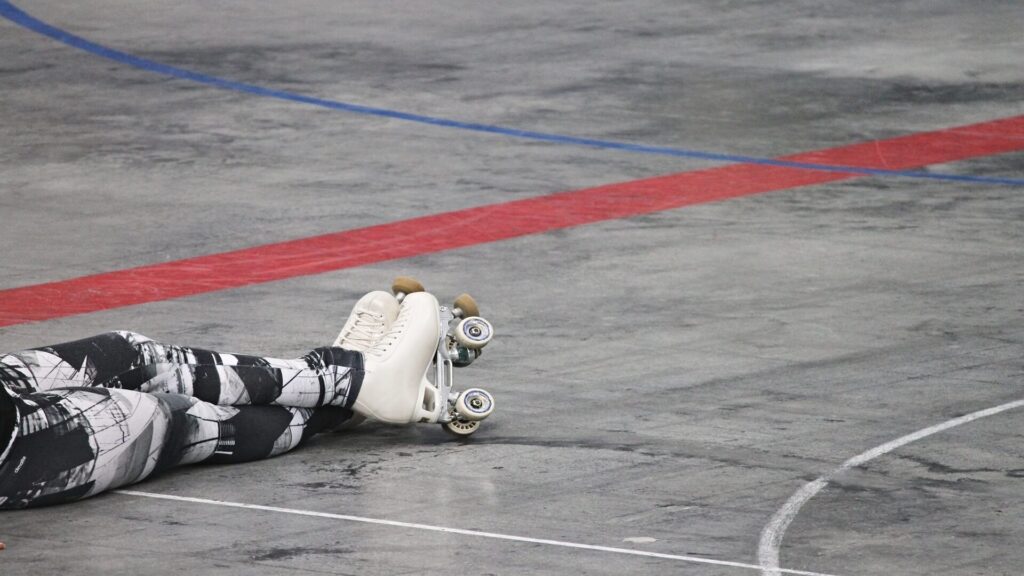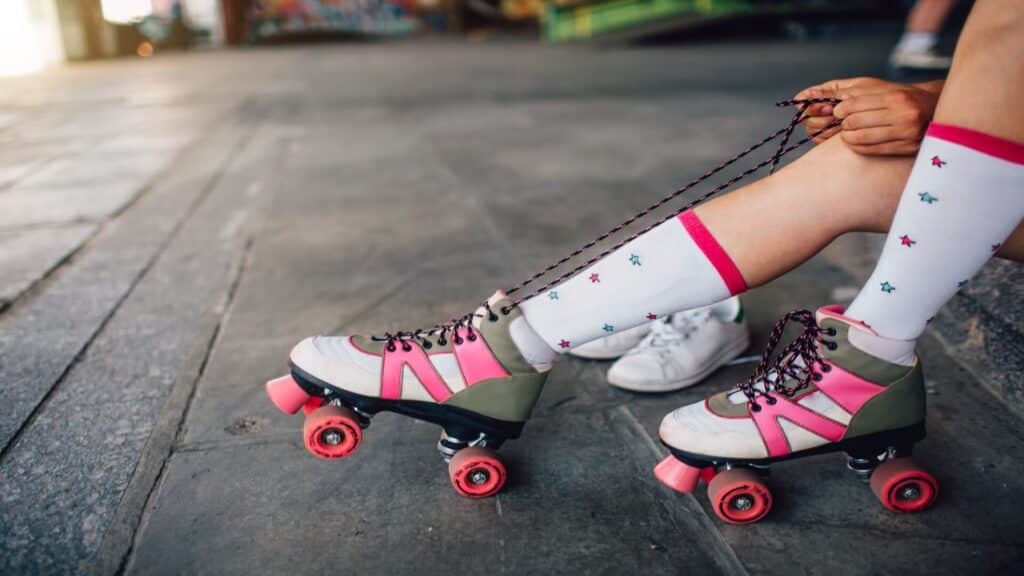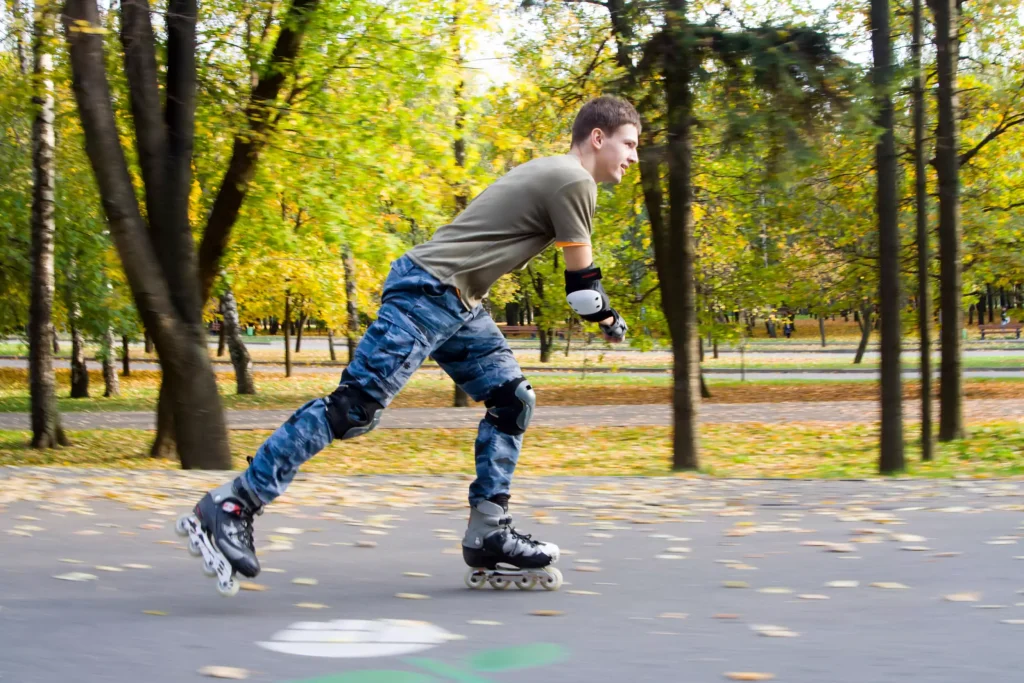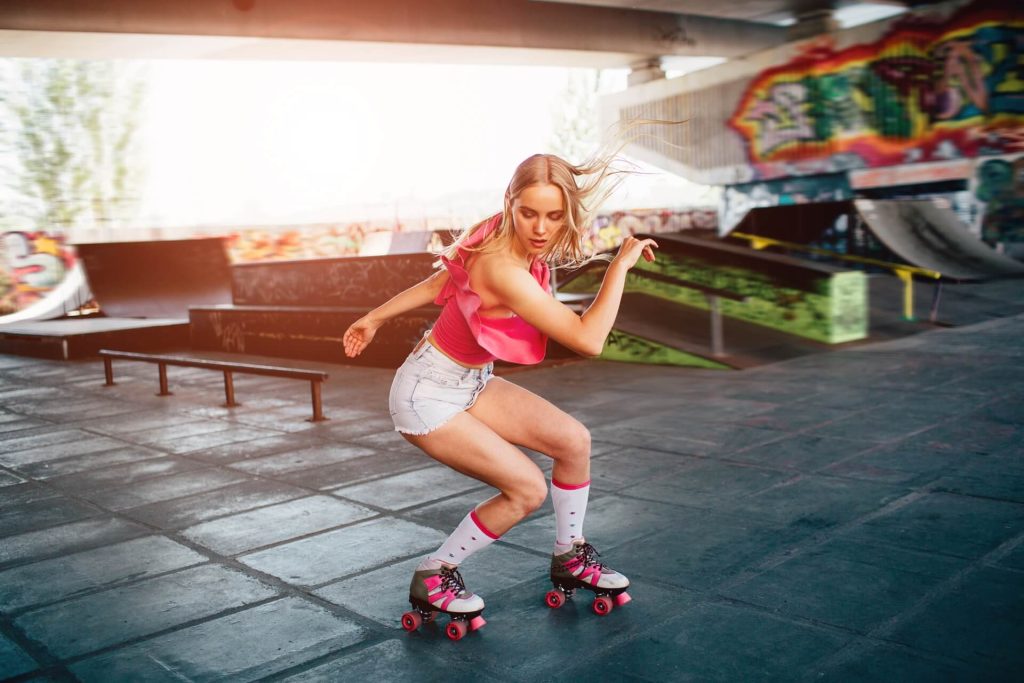Roller skating is a thrilling, fun-filled activity enjoyed by millions around the globe. It offers a unique blend of fitness, skill, and exhilaration. Gliding on wheels provides excellent exercise and improves balance, coordination, muscle strength, and cardiovascular health. It can also be a great social activity when enjoyed with friends.
However, falling is an inevitable part of this sport, particularly for beginners. Learning how to fall on roller skates can help minimize the risk of serious injuries, and make your roller skating experience much more enjoyable.
Table of Contents
Understanding the Risks of Roller Skating
Roller skating, like any other sport, comes with its share of risks. The most common falls often result in injuries to the wrists, knees, or head. Understanding these risks is the first step in learning how to fall on roller skates. It is important to remember that the art of falling safely doesn’t aim to eliminate falls but to ensure that when they occur, they result in minimal damage.
Some common causes of falls include uneven surfaces, high speeds, fatigue, or distractions. It’s important to be cautious of behaviors that can lead to an increased risk of falling, such as skating over obstacles, attempting tricks beyond your skill level, or not paying attention to your surroundings. Maintaining awareness and moderating speed can help avoid many falls. There is no one right way to fall, but learning proper techniques can minimize injury when falls do happen.
Choosing Quality Safety Gear
When taking up roller skating, it is crucial to make sure to wear appropriate high-quality safety gear to help you stay safe. Protective equipment like helmets, knee pads, elbow pads, and wrist guards provide an essential barrier against injury. When wearing a helmet, be sure to select one that meets safety standards and offers ample coverage and protection. Wear knee pads and wrist guards that fit snugly without restricting movement.
Take the time to properly fit and adjust all protective gear to maximize comfort and protection. It is recommended that beginners consult skate shop experts to ensure proper sizing and fit. Look for safety equipment made with durable materials like hard plastics and impact-absorbing foams. Ensure any fastening straps and buckles are securely adjustable. Replace equipment immediately if it becomes damaged or worn out. Investing in proper protective equipment is vital to minimize injury risk while roller skating.
Proper Stance and Posture
In addition to protective gear, maintaining proper stance and posture while skating can greatly aid in fall prevention. The ideal skating stance involves standing with feet shoulder-width apart, knees slightly bent, shoulders back, and head held up. This athletic stance allows you to stay centered and balanced over the skates.
Good posture is also key. Keep your back straight, and core engaged, and avoid hunching over. Bend at the knees and hips to lower your center of gravity when needed, not by bending at the waist. This helps you maintain stability and control. Proper stance and posture will take practice but can go a long way in improving balance and avoiding falls while skating.
Physical Preparedness and Balance
Being physically fit can aid significantly in fall prevention for skaters. Strength, flexibility, and good balance can help you recover from slips and minimize the chances of falling. It is highly recommended for new skaters to take lessons from a qualified instructor. Starting slowly and learning how to stop safely are crucial skills to master before attempting high speeds or tricks.
Regular off-skate conditioning can also help prepare a skater’s body. Exercises like squats, lunges, and core work can contribute to improved balance and core strength. Yoga is excellent for increasing flexibility, stability, and body control. Building these physical abilities will provide a solid foundation for staying upright and avoiding falls while roller skating. Don’t be afraid to start small and focus on the fundamentals – this will pay off with improved confidence and ability over time.

Techniques for Falling Safely
Mastering the correct techniques to fall can greatly minimize the risk of serious injury while roller skating. The idea isn’t to eliminate falls but to reduce the damage when they inevitably occur. Let’s delve into these techniques in more detail.
How to Fall Forward Safely
Falling forward is generally safer than falling backward due to the body’s natural ability to absorb the shock.
- Lower your center of gravity: The very first step to fall forward safely is lowering your center of gravity. This can be done by bending your knees and getting as low to the ground as possible. When you’re lower to the ground, the impact of the fall will be less severe because there’s less distance for you to fall.
- Go into a squat position: If you sense you’re about to fall, immediately attempt to go into a squat position. This might feel counterintuitive, but the objective is to allow your bottom to be the first thing that hits the ground. The muscles and fat in your bottom act as a cushion and will absorb the majority of the impact, which minimizes the risk of injury.
- Keep your hands in fists: This is another vital point to remember when falling. When you’re falling, your initial reflex might be to extend your hands to brace yourself. However, this often leads to sprained wrists or broken fingers. A safer alternative is to make fists with your hands, tuck your elbows into your sides, and let your forearms take the brunt of the fall. This way, you distribute the impact along a larger area and avoid direct injury to your wrists or fingers.
Falling Backwards Safely
Falling backward can be more dangerous due to the risk of head injuries. However, there are ways to make it safer.
- Try to roll it out: If you find yourself falling backward, the best-case scenario is to turn the fall into a roll. Falling straight back can lead to serious injuries, so if possible, try to twist your body and roll sideways. By doing so, you spread the impact across a larger area of your body, which can reduce the risk of injury.
- Protect your head: In the event of a backward fall, your number one priority should be protecting your head. The head is one of the most vulnerable parts of your body in such falls, and any injury here can be serious. To protect your head, tuck your chin into your chest as you fall. This reduces the likelihood of your head directly hitting the ground.
- Bend your knees: Another key factor in falling backward safely is to bend your knees as you fall. This can slow down the fall and reduce the distance to the ground, which will in turn lessen the impact.
Remember, the key to these techniques is practice. By rehearsing these steps, you will be better prepared when a real fall happens. This could mean the difference between a minor bruise and a trip to the hospital, making it an essential part of learning how to fall safely on roller skates. It is important to keep your limbs loose rather than stiff during a fall, as this can help reduce potential injuries. Loose muscles can absorb shock better than tensed muscles. Practicing falling with relaxed limbs will help train your body to react properly when an actual fall occurs.
Here you can watch a tutorial video from the youtube channel of Queer Girl Straight Skates that might help you out:
Recovering from a Fall
Despite your best efforts, falls can and will still happen while roller skating. Knowing how to properly assess and care for yourself after a fall can facilitate recovery.
First, take a minute after the fall to evaluate your condition before trying to stand up. Check for any bleeding or visible injuries. Identify the sore or painful areas. Move each limb slowly to check for a range of motion and any possible sprains or fractures.
For minor abrasions, clean the wound thoroughly and apply antibiotic ointment and a bandage. Ice any swollen or painful areas to help reduce inflammation. Take over-the-counter pain medication as needed.
Seeking prompt medical attention after a major fall is crucial. Signs that indicate a need for medical care include significant bleeding, obvious deformity, extreme swelling, inability to bear weight, or any suspicion of broken bones or head injury. Don’t delay getting evaluated if any of these warning signs are present.
Learning how to safely recover after an occasional spill or tumble is all part of the process as you gain experience on skates. Don’t let falls detract from the joy of roller skating! With the right preparation, protective gear, and post-fall care, skaters of all levels can get back up, brush themselves off, and keep on rolling.
Training Techniques for Safe Falling
Practicing these safe falling techniques is key to learning how to fall on roller skates. Begin with dry-land training. Practice falling on a soft surface, like a yoga mat or grass. Repetition will help train your body to react instinctively with the correct falling technique during an actual fall.
Final Thoughts
Learning the proper ways to fall safely is an integral part of learning to roller skate. While you can take steps to prevent falls, be prepared that you will likely fall frequently as a beginner. Don’t be discouraged when you fall – it’s simply part of the learning process. With enough practice, you will gain confidence and ability over time.
Remember to wear protective gear, work on balance and conditioning, and regularly rehearse falling techniques. This preparation will help minimize injury when falls inevitably happen. Mastering safe falling takes patience and perseverance. By sticking with it, the rewards of roller skating will far outweigh any tumbles along the way. With the thrill of speed and movement, improved fitness, and fun with friends, roller skating is an activity worth learning safely and enjoying for a lifetime.
Frequently Asked Questions
Question: Why is it important to learn how to fall safely on roller skates?
Answer: Falling is inevitable in roller skating, particularly for beginners. Learning how to fall safely can reduce the risk of severe injuries, allowing you to enjoy roller skating with greater confidence and security.
Question: Can being physically fit help me prevent falls while roller skating?
Answer: Yes, being physically fit can significantly aid in fall prevention. Regular exercise can help improve your strength, flexibility, and balance, which are all crucial for maintaining stability while roller skating.
Question: How can I fall forward safely while roller skating?
Answer: To fall forward safely, you should lower your center of gravity, go into a squat position, and keep your hands in fists to let your forearms absorb the impact.
Question: How can I fall backward safely while roller skating?
Answer: To fall backward safely, try to roll out the fall, protect your head by tucking your chin into your chest, and bend your knees to lessen the impact.
Question: How can I practice falling safely?
Answer: You can practice falling safely through dry-land training. Begin with a soft surface like a yoga mat or grass. Repeated practice can help train your body to respond instinctively with the correct technique during an actual fall.
Question: Is it possible to roller skate without ever falling?
Answer: While improving your roller skating skills can decrease the frequency of falls, falling is considered an inherent part of the learning process. It’s nearly impossible to roller skate without ever falling, which is why learning how to fall safely is vital.


